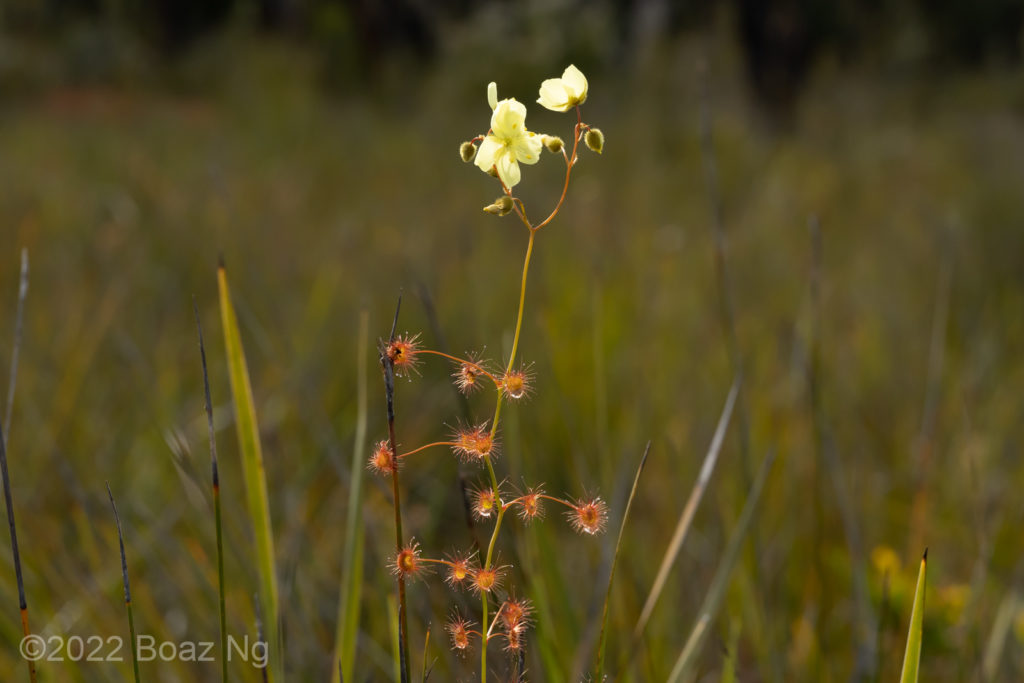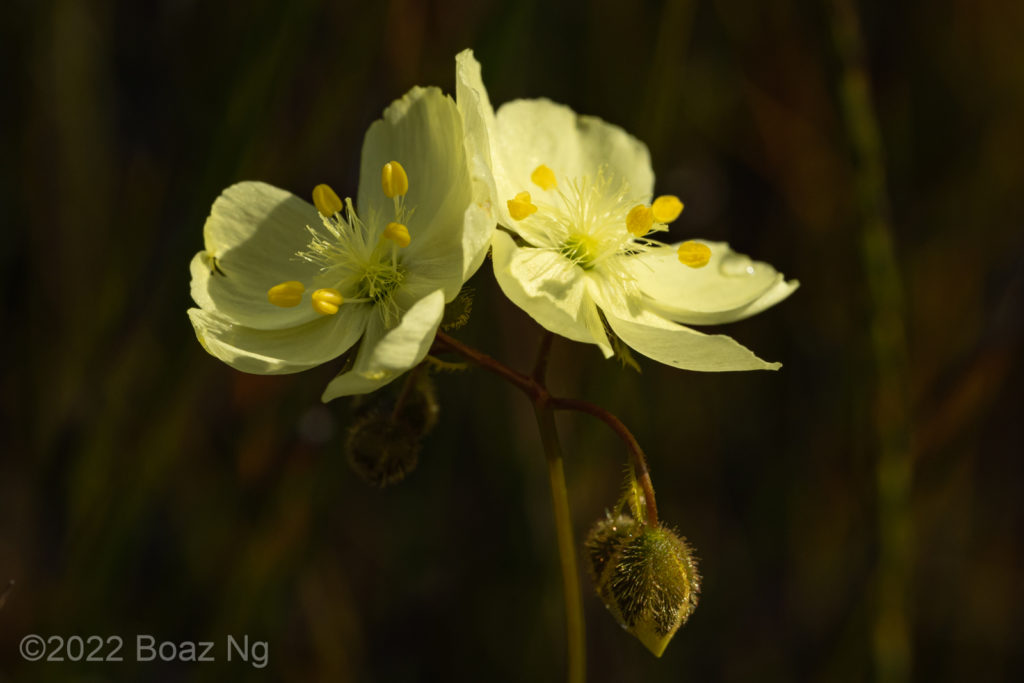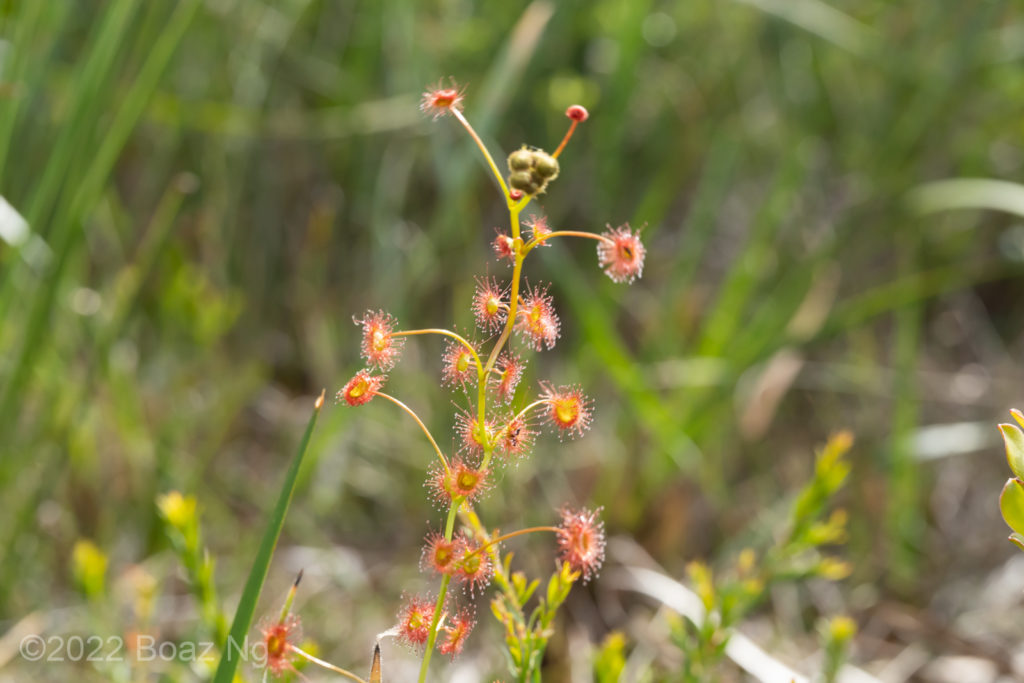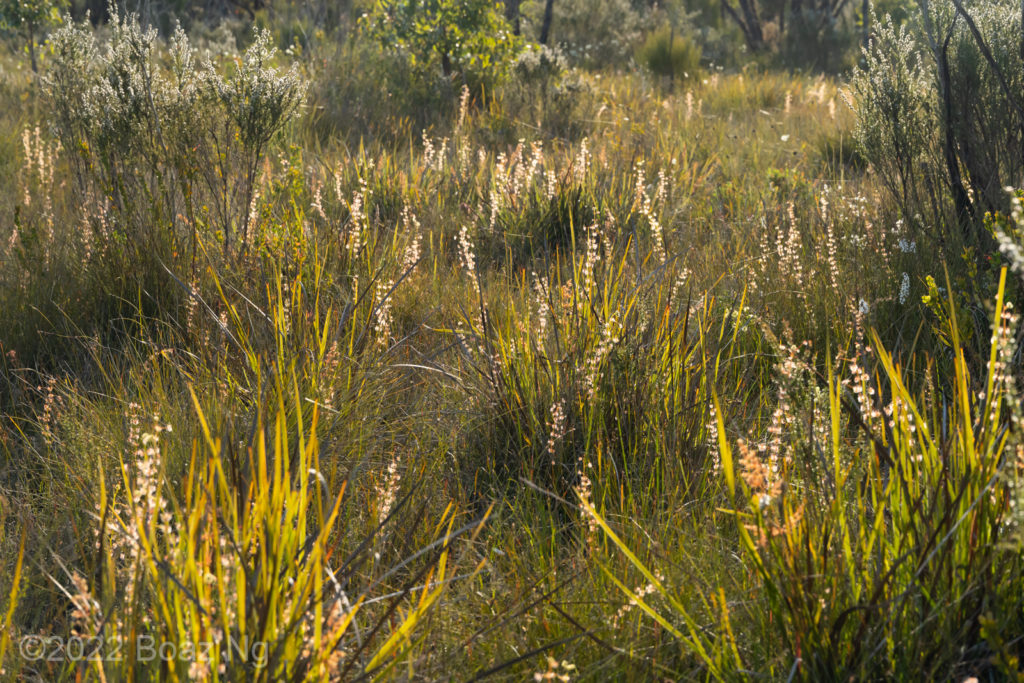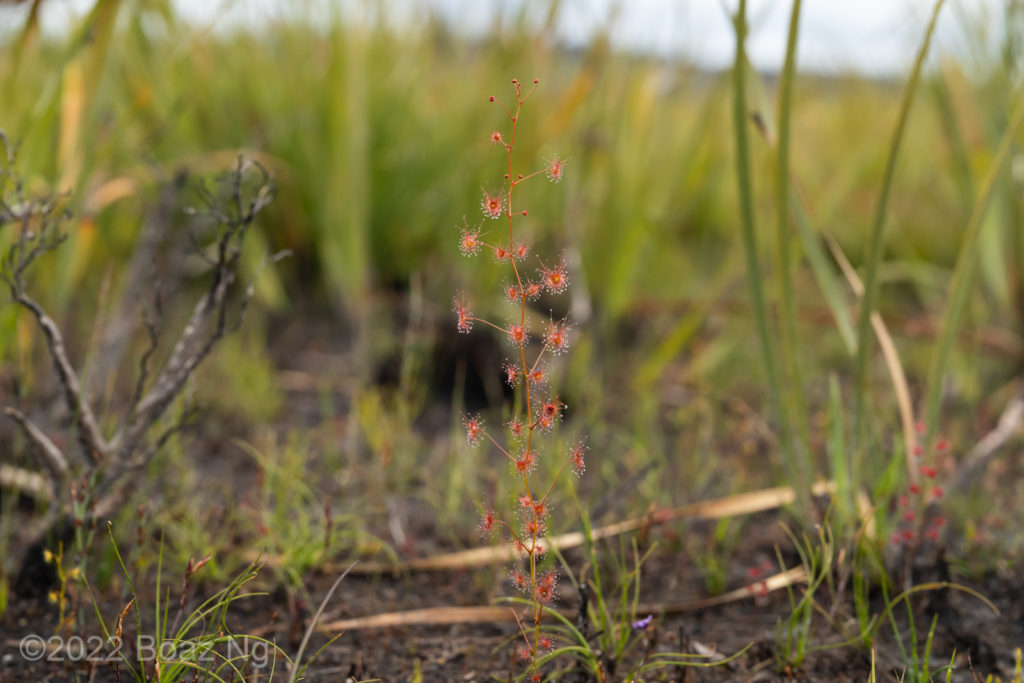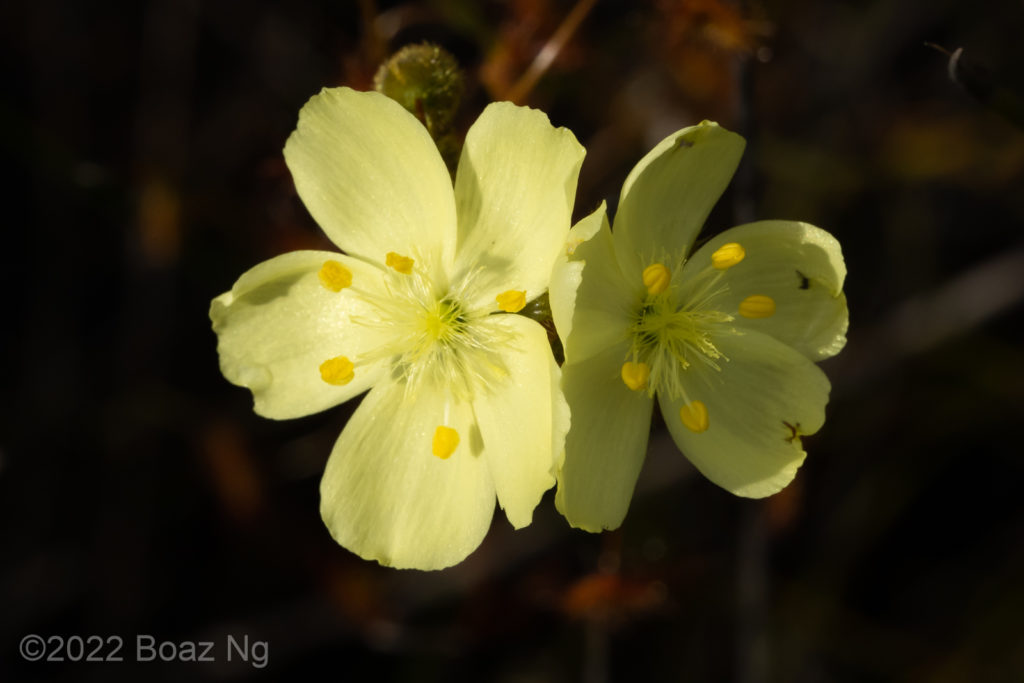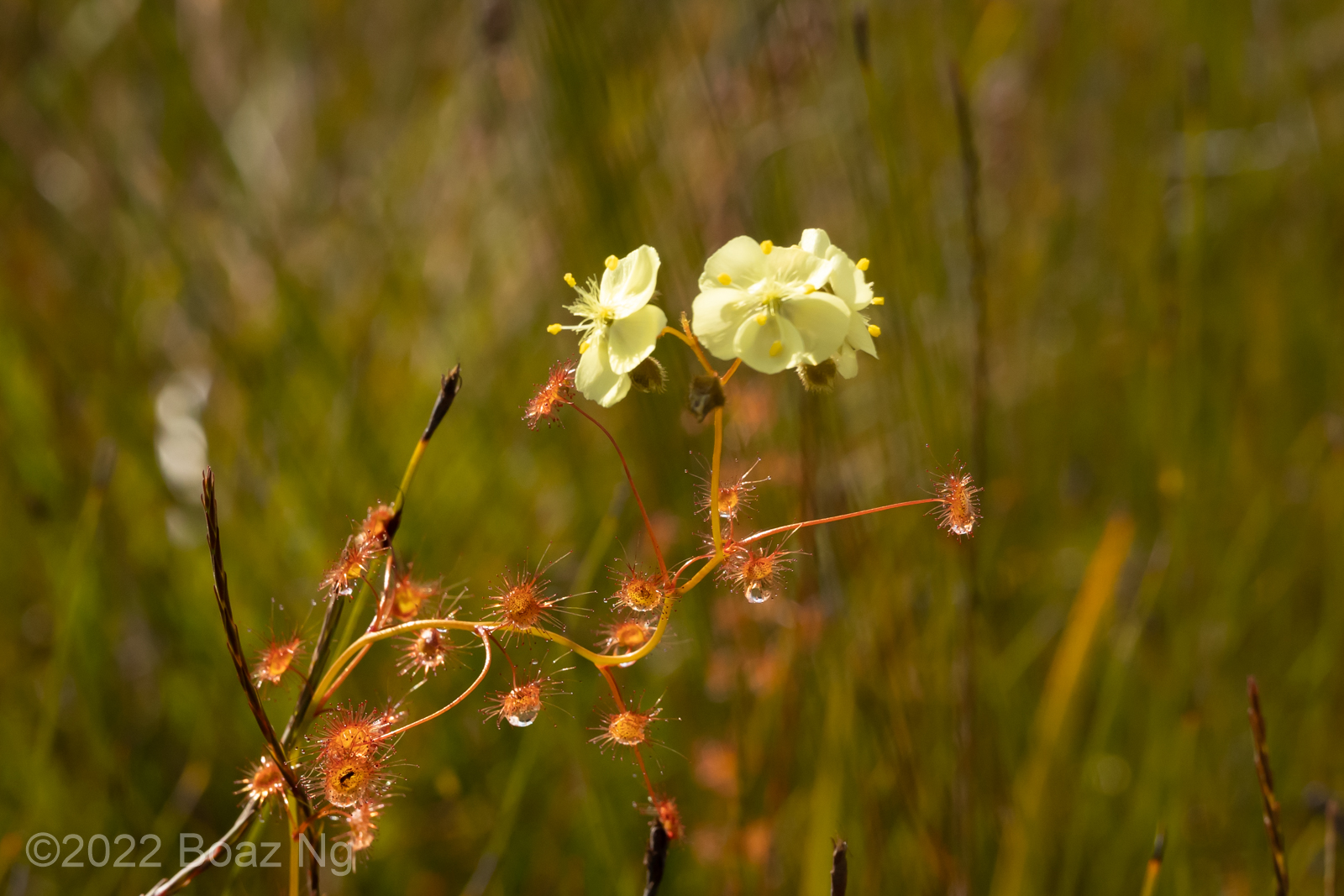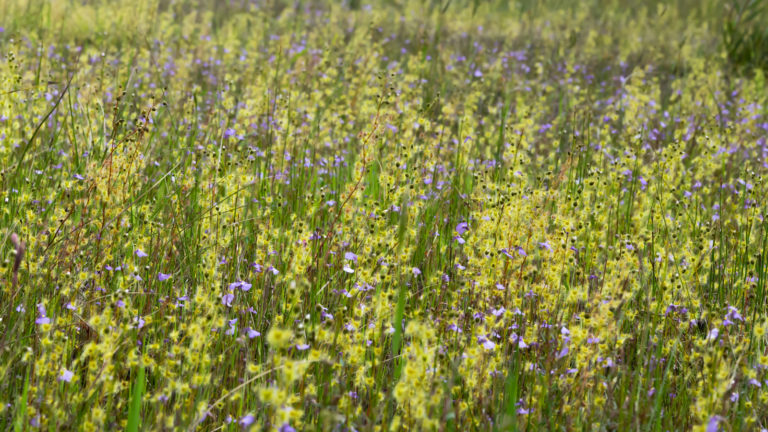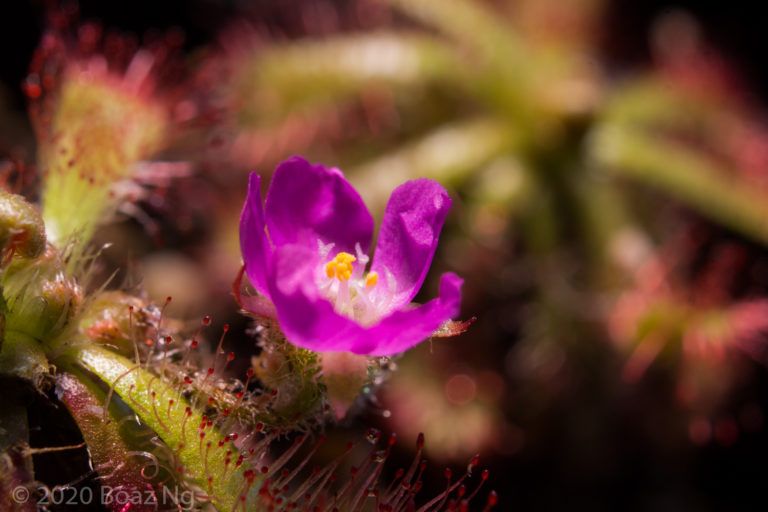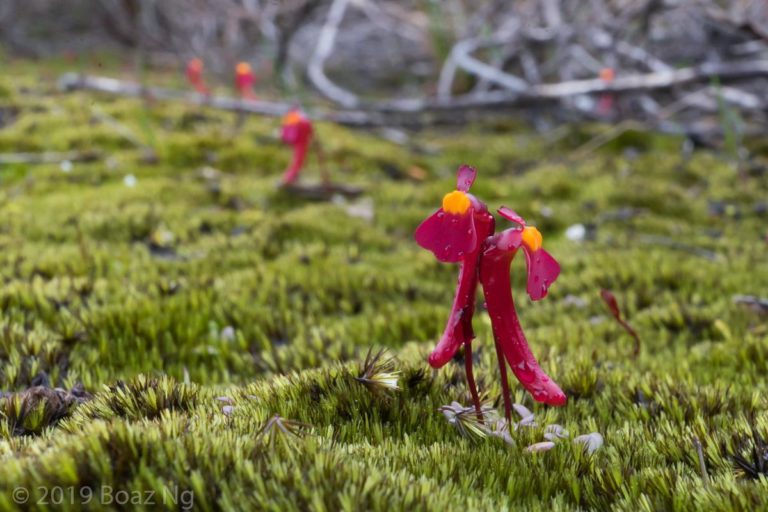Drosera sulphurea is an erect tuberous sundew endemic to swampy habitats. It is named after its pale-yellow sulfur-coloured flowers.
Drosera sulphurea is a large sundew that grows up to 40 – 60 cm tall. The unbranched stem is usually self-supporting in earlier stages of growth but can attach to other plants with its leaves to support itself upright towards flowering. The leaves emerge in a set of three from a single node, with the central leaf longer than the two other ones. The laminae are crescent-shaped. The sepals are covered with dense glandular hairs. The flowers are a pale shade of yellow. The leaves are usually reddish while the stems are usually green.
The species grows in swampy flats on the south coast generally between Manypeaks to Denmark, and also west near Margaret River. It inhabits open heathland in the swamp basin, generally in moist, sandy peat. Flowering occurs from mid-spring to early summer, followed by a dormant period.
Drosera sulphurea is identified by its yellow flowers, crescentic leaves and self-supporting stem. The foliage is very similar to Drosera neesii, which also grows in the same areas. Drosera sulphurea is distinguished by its yellow flowers (D. neesii has pink flowers) and leaves which are generally reddish (the leaves of D. neesii are usually bright green). The species is distinguished from the other yellow-flowered tuberous sundews by its strongly crescentic leaves and stems that are more or less self supporting, at least in early stages of growth.
